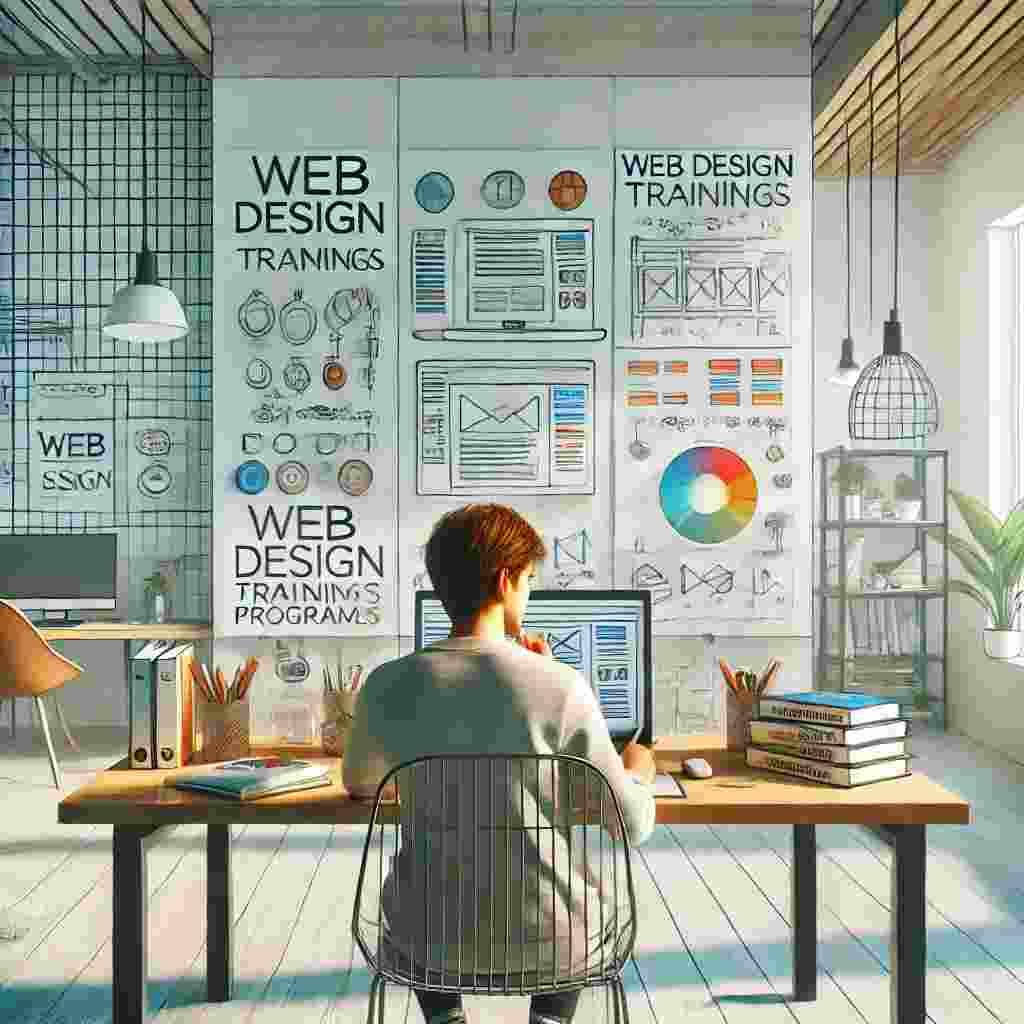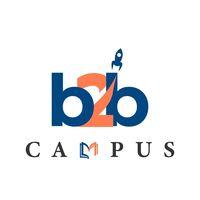Notifications

12 minutes, 5 seconds
-460 Views 0 Comments 0 Likes 0 Reviews

In today’s digital-first world, having a strong online presence is vital for businesses, organizations, and even individuals. Whether you’re a startup founder, a freelancer, or someone looking to break into the tech industry, web design is a critical skill that can set you apart in a competitive job market.
B2B Campus offers comprehensive Web Designing Training In Mohali both offline and online. Their courses cover HTML, CSS, JavaScript, responsive design, and more. Whether in-person at their Mohali campus or remotely, students gain practical skills to excel in web design.
Choosing the right web design training program is essential to building the necessary skills and knowledge to succeed. With the increasing availability of online courses, boot camps, and traditional institutions offering web design programs, it can be overwhelming to decide which path to take.
This article will guide you through the key factors to consider when choosing the right web design training program for your career.
Before selecting a web design training program, it's important to assess your current skill level. Web design ranges from beginner to advanced topics, so understanding where you stand will help you find a course that is suitable for your needs.
Beginner: If you’re new to web design and have little to no experience with coding or graphic design, you’ll want to find a beginner-friendly course. Look for programs that introduce HTML, CSS, and basic design principles. These programs should emphasize hands-on learning and offer tutorials that are easy to follow.
Intermediate: If you already have a basic understanding of web design and are comfortable with the fundamentals, look for programs that dive deeper into more advanced topics. You may want to explore courses on responsive design, user experience (UX), JavaScript, or content management systems (CMS) like WordPress.
Advanced: If you have significant experience in web design and want to specialize or master certain skills, consider programs that offer advanced topics such as SEO optimization, website performance, backend development, or e-commerce design.
Knowing your starting point helps you avoid feeling overwhelmed or under-challenged by the course material, ensuring you get the most out of your learning experience.
What do you want to achieve with your web design skills? Your career goals should influence the type of web design training you choose. Are you aiming to become a freelance web designer, a front-end developer, or a UX/UI designer? Defining your goals will help you select a training program that aligns with your ambitions.
Freelance Web Designer: If you plan to freelance, you’ll need to build a solid portfolio, understand client relations, and master design principles that focus on user experience and visual design. Look for courses that emphasize both technical skills and business aspects of freelancing.
Front-End Developer: If you want to specialize in front-end development, focus on courses that teach HTML, CSS, JavaScript, and frameworks such as React or Angular. These skills are essential for creating interactive, dynamic web pages.
UX/UI Designer: If you’re interested in the design side of web development, UX/UI courses will teach you how to design user-friendly interfaces and create a seamless user experience. Look for programs that incorporate psychology principles and usability testing.
Setting clear career goals will help you identify the right type of program and ensure it delivers the skills necessary for your desired career path.
The credibility of a web design training program can significantly impact your future opportunities. While online platforms like Udemy and Coursera offer a wide range of courses, make sure you’re selecting an accredited program or one that has strong industry recognition. Accreditation ensures that the course meets industry standards and is respected by employers.
Accreditation: Programs accredited by professional bodies such as the National Association of Colleges and Employers (NACE) or other relevant organizations often carry more weight in the job market.
Industry Recognition: If you're unsure about the quality of a course, research whether the program is endorsed by well-known companies or organizations in the web design or tech industry. Positive reviews from professionals already working in the field can also help guide your decision.
Additionally, consider how well the program is recognized by potential employers. Programs offered by reputable institutions or established online learning platforms are generally more respected and provide better networking opportunities.
A well-structured curriculum is crucial to mastering web design. The curriculum should be comprehensive, practical, and up-to-date with the latest trends and technologies in web design.
Core Web Design Skills: Ensure that the program covers essential web design skills, such as HTML, CSS, JavaScript, and basic graphic design principles. You should also learn how to use design tools such as Adobe Photoshop, Illustrator, or Sketch, which are widely used in the industry.
Responsive Design: With the growing use of mobile devices, learning how to design websites that are responsive and adapt to various screen sizes is a must. Choose a course that emphasizes responsive web design.
SEO and User Experience (UX): A good web designer should understand how search engine optimization (SEO) impacts website performance. Look for programs that teach SEO principles and user-centered design techniques. Courses on UX/UI will help you design websites that are user-friendly and easy to navigate.
Portfolio Building: Most web design programs should include practical projects that allow you to build a portfolio. A portfolio is essential when applying for jobs or freelance gigs, as it showcases your ability to apply what you’ve learned.
Make sure the program includes a hands-on approach, with real-world projects that simulate actual design work.
The Digital Marketing Course In Mohali at B2B Campus integrates the latest learning practices with experienced tutors. Students benefit from hands-on projects, industry-relevant curriculum updates, and personalized guidance to master current trends in web design.
One of the most important decisions you’ll make when choosing a web design training program is whether to take an online or in-person course.
Online Training: Online courses offer flexibility and convenience, allowing you to learn at your own pace from anywhere. Online programs are ideal for individuals who are juggling other responsibilities, such as work or family commitments. Popular online platforms include Udemy, Coursera, LinkedIn Learning, and others. However, you must be self-disciplined to stay on track without in-person accountability.
In-Person Training: If you prefer structured learning with direct access to instructors and peers, an in-person course might be a better fit. Many universities and coding boot camps offer full-time or part-time web design training programs. These courses tend to offer more personal interaction and hands-on support.
Both options have their pros and cons. Consider your learning style, schedule, and budget when deciding.
Web design training can vary widely in cost, depending on whether you choose an online course, a boot camp, or a college degree program. It's important to evaluate your budget and the potential return on investment (ROI) for the program.
Online Courses: These tend to be more affordable, with prices ranging from $50 to a few hundred dollars, depending on the course depth and platform.
Coding Boot Camps: Boot camps typically cost more but offer intensive, accelerated training. These programs can range from $2,000 to $20,000, but they often provide career support and networking opportunities.
Degree Programs: If you prefer to pursue a full degree in web design or related fields, the cost will be higher. A bachelor’s degree in web design or computer science can cost anywhere from $10,000 to $40,000, depending on the institution.
Before committing, research scholarship or financial aid options to help make the program more affordable.
Look for training programs that offer career support, such as job placement assistance, internships, or mentorship. Many boot camps and universities have strong ties with companies looking to hire web designers, providing you with job opportunities after graduation. Networking opportunities, such as access to alumni or industry events, can also be valuable for building connections in the field.
Choosing the right web design training program is a crucial step in advancing your career in web design. By considering factors such as your current skill level, career goals, course content, accreditation, and costs, you can select a program that meets your needs and prepares you for success in this dynamic and ever-evolving field. Whether you choose an online course, a boot camp, or a formal degree program, the right training will give you the skills and knowledge to thrive in the world of web design.
advanced digital marketing course Digital Marketing course in Mohali Web Designing course in Mohali

